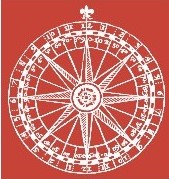Juana La Beltraneja, Dynastic Fears, and Threats of Marriage (1475–1506)
This article focuses on the life of Juana, the Excelente Senhora (excellent lady), between 1479 and 1506. Juana, widely known as La Beltraneja, was recognized by King Enrique IV of Castile (1454–74) as his legitimate daughter and successor despite…
Listée dans Article | publication par groupe Iter Community
Version 1.0 - publiée le 26 Aug 2025
Sous licence Creative Commons BY-NC 4.0
Description
This article focuses on the life of Juana, the Excelente Senhora (excellent lady), between 1479 and 1506. Juana, widely known as La Beltraneja, was recognized by King Enrique IV of Castile (1454–74) as his legitimate daughter and successor despite claims that she had been conceived in an adulterous relationship between her mother Joana of Portugal and Beltrán de la Cueva. Although Juana lived in exile in Portugal from 1476 onward, her young age and unmarried status made her a powerful diplomatic weapon during the reign of the Portuguese king João II (1481–95). While she had professed as a nun and was nominally attached to the monastery of Santa Clara in Coimbra, her degree of seclusion waivered with the vicissitudes of Portugal’s foreign policy. Until 1522, she herself maintained the position that she was the rightful heir to the throne of Castile.
Citer ce travail
Les chercheurs doivent citer ce travail comme suit :
Tags
Notes
Original publication: Ferreira, Susannah Humble. "Juana La Beltraneja, Dynastic Fears, and Threats of Marriage (1475–1506)." Renaissance and Reformation 43 (4): 2021. 79-100. DOI: 10.33137/rr.v43i4.36383. This material has been re-published in an unmodified form on the Canadian HSS Commons with the permission of Iter Canada / Renaissance and Reformation. Copyright © the author(s). Their work is distributed by Renaissance and Reformation under a Creative Commons Attribution-NonCommercial 4.0 International License. For details, see https://creativecommons.org/licenses/.
Aperçu de la publication
Iter Community
This publication belongs to the Iter Community group.
When watching a publication, you will be notified when a new version is released.
